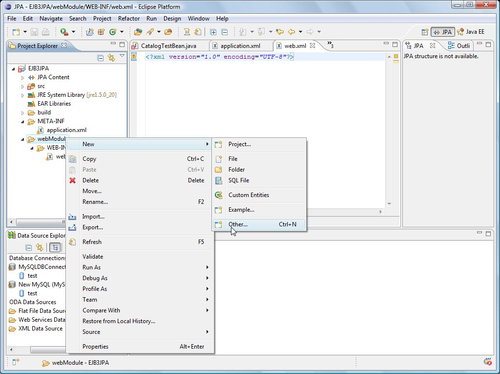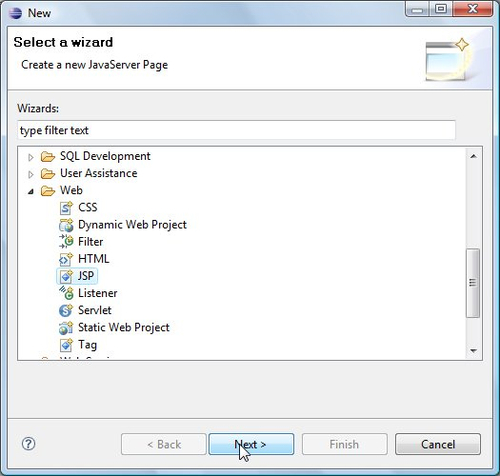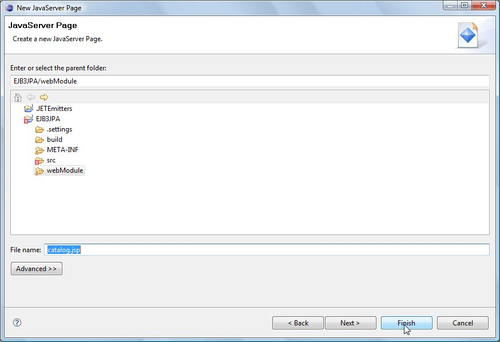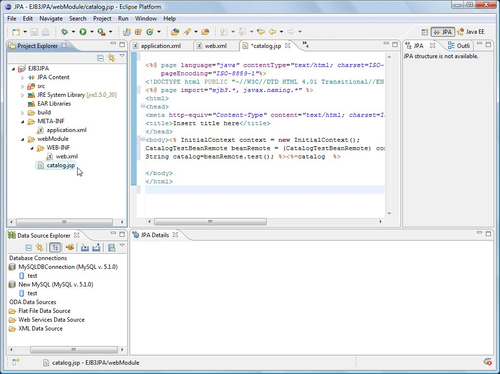We have created an entity bean that contains the business logic. We have created a session bean that is a wrapper for the entity bean. Next, we shall create a test client JSP in which we shall invoke the test() method of the session bean. For the web application component, we need to create a web module folder, a WEB-INF folder in the web module folder and a web.xml in the WEB-INF folder. To create a JSP in the webModule folder, right-click on the webModule folder and select New | Other.

In the New window, select Web | JSP and click on Next.

In the New Java Server Page window, select the webModule folder and specify the JSP File name as catalog.jsp. Click on Finish, as shown next:

The catalog.jsp JSP gets added to the webModule folder. The catalog.jsp is shown below, including the JSP code, which we shall discuss next:

We shall create an instance of CatalogTestRemote using JNDI lookup for which we need to create an IntialContext object. We need to set the InitialContext...



